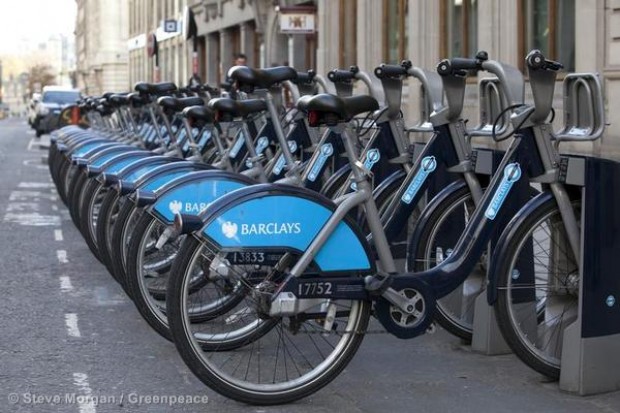People look to world cities like London to provide political leadership on national and international problems like ending our oil and gas addiction. With exactly a week to go before the May 3rd London elections, we’ve teamed up with Friends of the Earth to look at how the main four candidates shape up.
Who has the best record and policies? We found that Labour's Ken Livingstone is the greenest of the two leading candidates to be London Mayor but Jenny Jones for the Greens comes top. Liberal Democrat Brian Paddick came third with current Mayor, Boris Johnson of the Conservative Party, trailing behind in fourth place.
We assessed the manifestos, pledges and published records of the four leading mayoral candidates and ranked them on six key environmental issues: air pollution, transport, aviation, climate change, energy/energy efficiency and green spaces. Air pollution has been a big issue in the election campaign with 4,260 people dying each year from London’s smog. Boris Island has kicked off another row about airport expansion in the city. Energy bills have scarcely left the headlines for months and tube and bus fares have been the central debate in the election.
The study revealed stark differences in approach and commitment to environment policies which have been major parts of the election campaigns. Dr Doug Parr, Greenpeace Chief Scientist said “Temporarily sticking air pollution to roads and championing airport growth and cars won’t cut it. But policies to insulate the city’s draughty homes, make public transport more appealing and cycling safer can have a serious impact on carbon emissions and Londoners’ wallets and wellbeing.”
Here are the main findings:
Jenny Jones’ proposals, such as London-wide road user charging, address the scale of action needed to make London’s air safe to breathe and to meet climate targets. This would cut fares and traffic levels, helping create the shift to walking, cycling and public transport needed to keep the capital moving. She understands the need to support policies that are win, win, win – environmentally, socially and economically.
Ken Livingstone delivered difficult and ambitious green politics in office – his Congestion Charge, Low Emission Zone and climate change targets and strategies were ground-breaking. Environmental issues again run centrally throughout Livingstone’s manifesto in 2012, with strong commitments on most of the key areas. However, he failed to meet EU air pollution targets as Mayor, and proposed some measures which would have worsened pollution such as the Thames Gateway road bridge. This time round he has less bold commitments than in previous elections, especially on road pricing. But bringing fares back down on public transport, more home insulation and introducing an energy coop will help reduce fossil fuel use.
Brian Paddick’s central London Low Emission Zone is a strong air pollution policy – helping to push his ranking to second in that category. However, he supports new river crossings for vehicles in East London which would increase traffic, and greater clarity is needed about whether his support for larger aeroplanes will result in increased climate emissions and noise pollution.
Boris Johnson’s strongest environmental record is on green spaces – he recognises their intrinsic value and importance for Londoners’ well being. His Capital Growth scheme and protection for back gardens have been strong points in office. However, his transport policies to increase road space for motor vehicles would increase traffic and pollution. His support for a 50 per cent increase in flights from City Airport and a new multi-runway airport in the Thames Estuary ‘Boris Island’ sets him apart as a candidate who does not respect the urgent need to tackle air pollution and climate change. Boris tops the ranking on green spaces, but comes last in all other categories.



